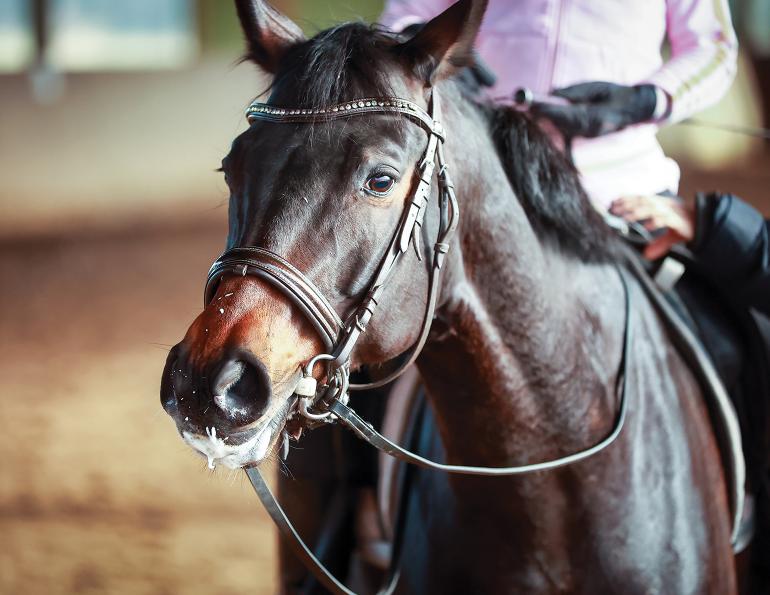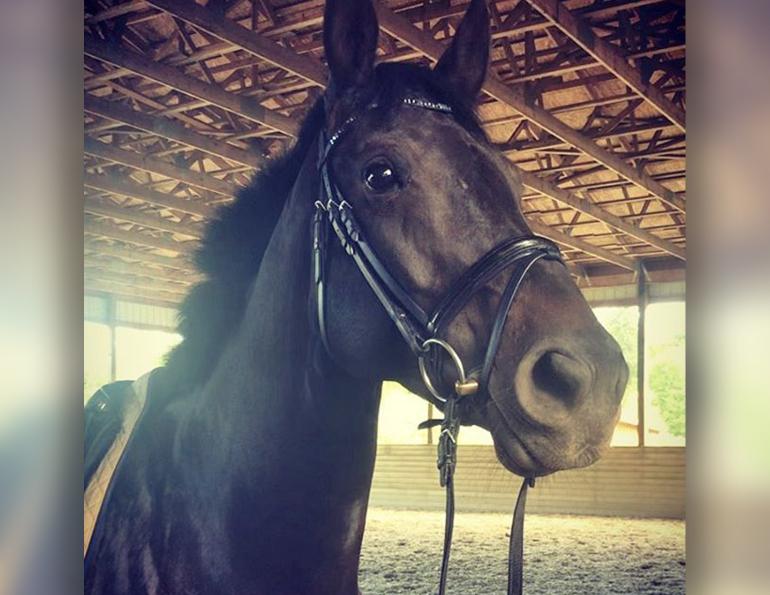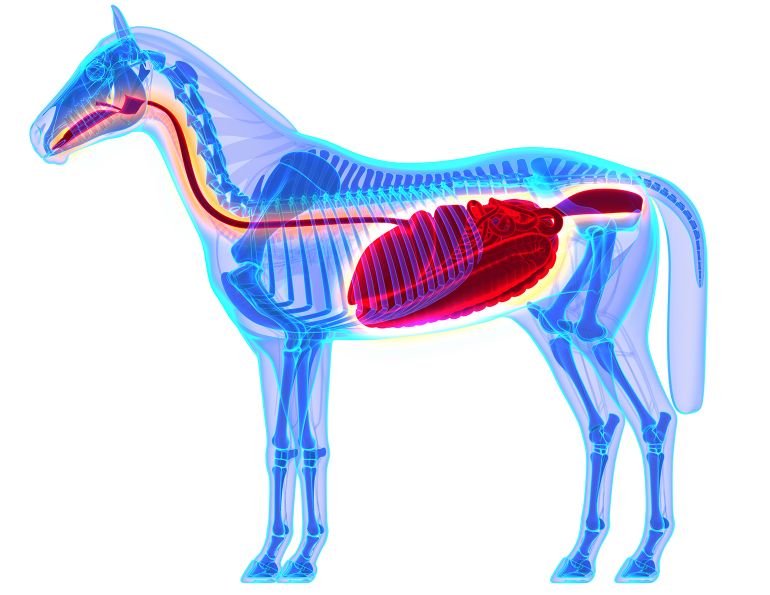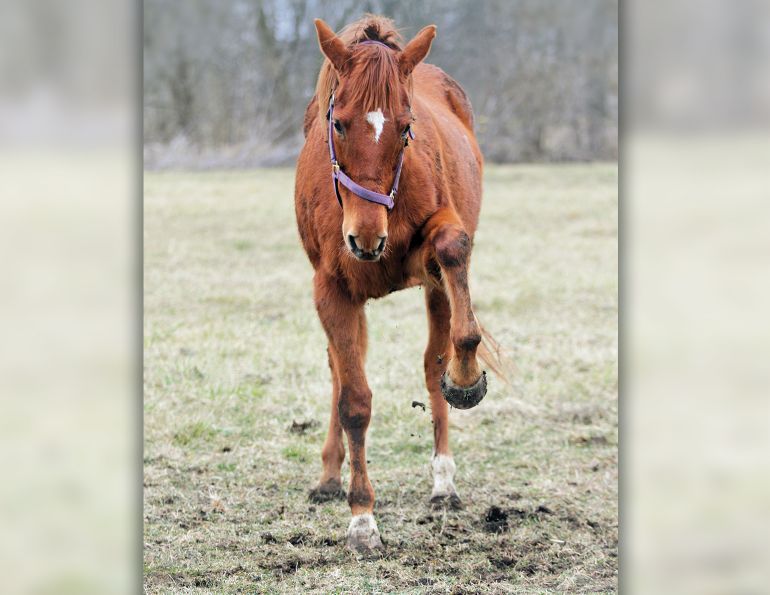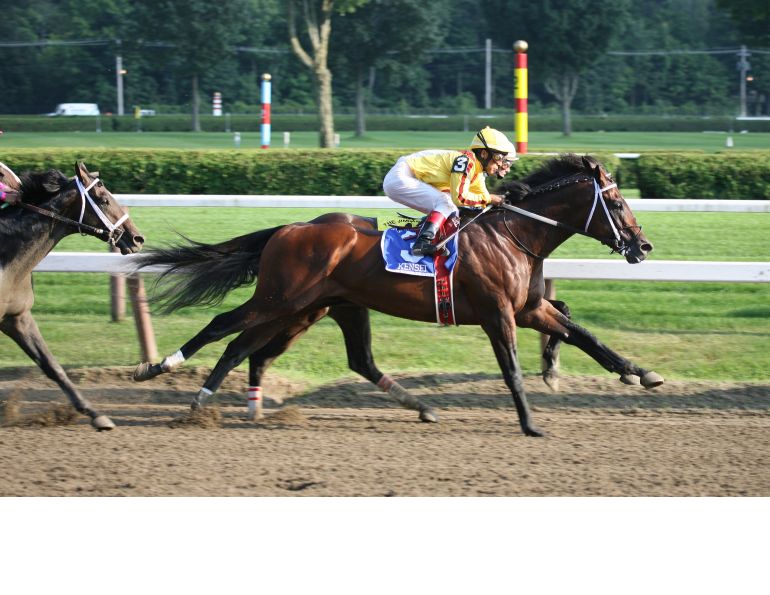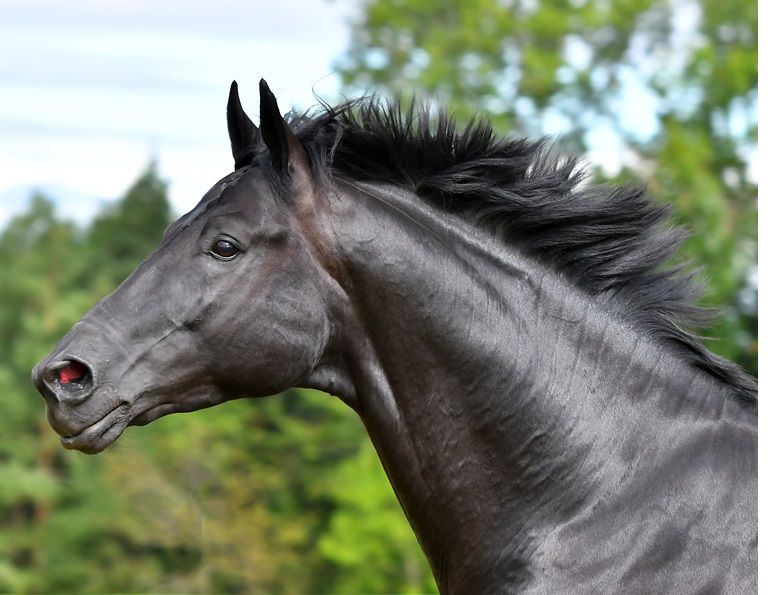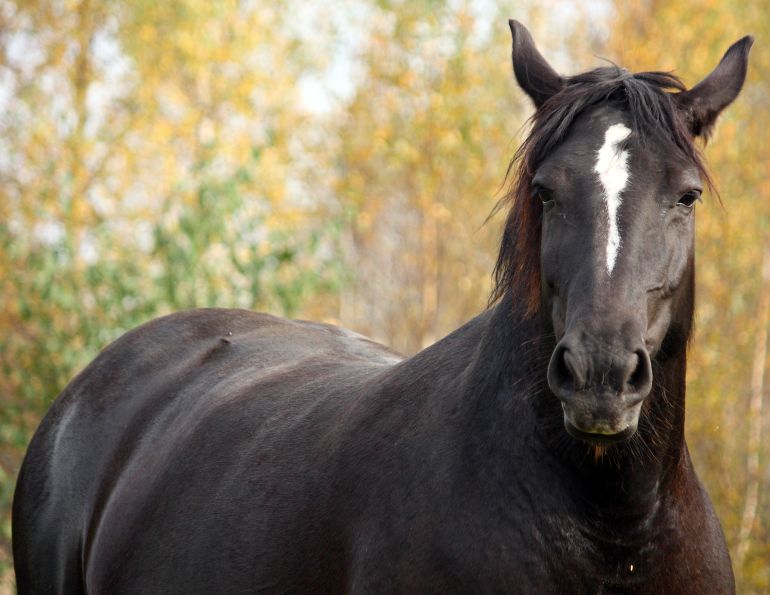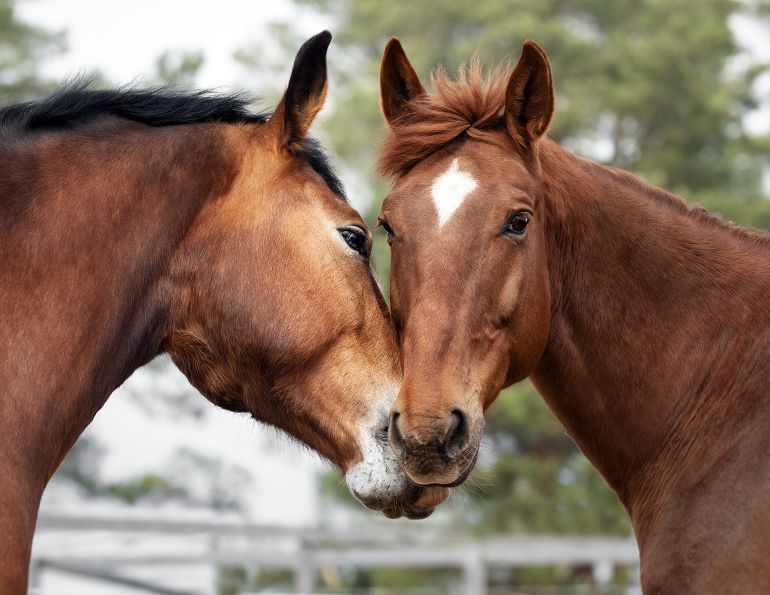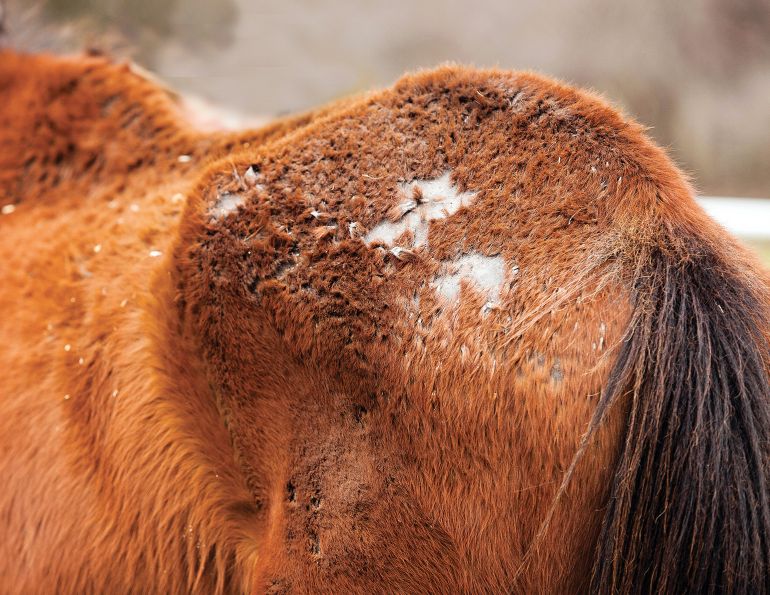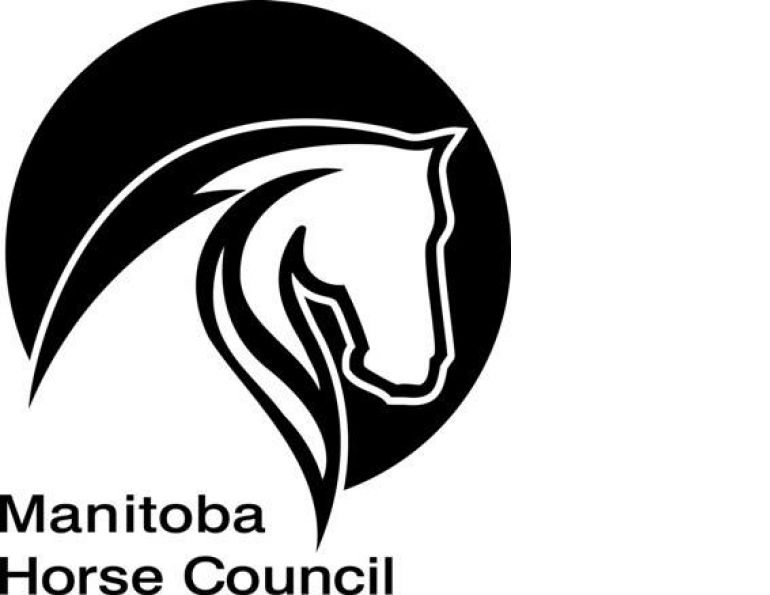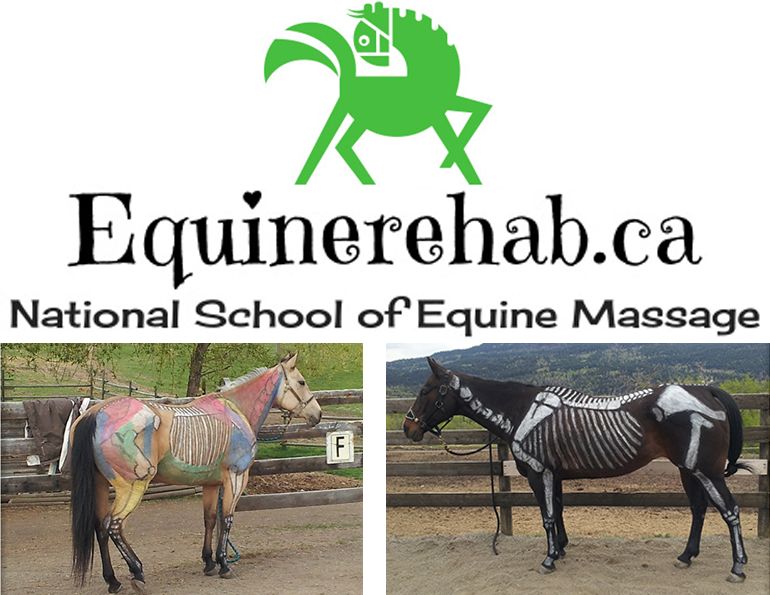From Fat to Fit
By Tania Millen, BSc, MJ
It’s spring and that means more time spent riding. Is your horse ready? Regardless of whether you want to trail ride, compete at a certain level, jump, do endurance or dressage, your horse needs to be fit for the job.
“Many riders are battling training problems which often stem from some sort of weakness in the body,” says Jec Aristotle Ballou, a trainer based in California, USA who has written four books on fitness and conditioning horses. “I think most horses have a revved up cardiovascular engine on a pretty weak chassis.”
It’s not just training that suffers when horses have poor fitness; injuries are more prevalent, too.
“Ninety percent of injuries are repetitive strain injuries,” says Dr. Bri Henderson, a veterinarian who works with Canada’s endurance riders and operates Rivendell Equine Veterinary Services in Grand Valley, Ontario. “Riders must cross-train on different surfaces so that the horse becomes stronger, plus the body is loaded differently to prevent damage from repetition.”
Injury prevention is key and that’s where a fitness plan comes in.
What is Fitness?
“Fitness is being able to achieve your goals with your horse happy and uninjured,” says Kim Woolley, who represented Canada in endurance at the 2018 World Equestrian Games and is Canada’s first High Performance 1 Coach for endurance. “If a horse isn’t happy because they don’t feel fit enough to do what you ask, then they’re not going to want to do the job.”
Different body tissues adapt and gain fitness at different speeds.
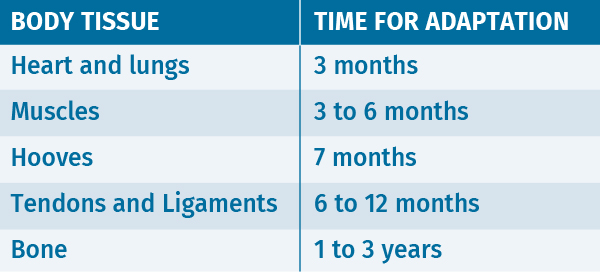
Fitness is different from conditioning. Fitness is the physical ability to do a task, while conditioning encompasses the whole experience. Accordingly, along with a fitness program, the horse may need skills training, exposure to new places and experiences, and the mental capacity to complete the work.
Cross-training incorporates different components of fitness such as postural control, strength, and aerobic and anaerobic endurance. Each of these components produce significant changes in the horse’s body that, as a whole, create the fitness needed to achieve the rider’s goals.
“I break fitness into three categories,” says Ballou. “There’s cardiovascular fitness — the heart and lungs — which includes aerobic and anaerobic fitness. Then there’s musculoskeletal fitness. I think that’s where the majority of horses need more work. Then there’s a third category, which applies to horses who are rehabilitating after an injury or who have been out of work for six months or more. That’s neurosensory fitness, which means recruiting the motor and sensory nerves for muscle activation.”
These three categories of fitness are described below.
Neurosensory Fitness
The postural muscles — slow moving, slow-twitch muscle fibre activities — are one of the keys to neurosensory fitness.
Research by biomechanics expert Dr. Hilary Clayton found that dynamic back exercises, such as carrot stretches, improved the size and strength of horses’ epaxial muscles. They’re the muscles along the horse’s back which we often refer to as the “topline.”
The American College of Sports Medicine and Injury Rehabilitation notes that doing three to five repetitions of dynamic back stretches daily for 12 weeks was found to increase a horse’s multifidus muscle, reduce asymmetry from left to right, reduce back pain, and improve core strength. Atrophy of the multifidus muscle creates instability within the intervertebral joints (between the vertebrae), creating pain and osteoarthritis. This is often observed as tension or spasm of the longissimus dorsi muscle.
It may not seem like you’re doing much, but exercising the postural muscles of the horse is incredibly valuable.
Other exercises that increase neurosensory fitness include encouraging proprioception by walking the horse over different surfaces in short distances. For example, walking on a grass verge then across a gravel driveway, down a paved alley and into a sand arena. That will build proprioception — the horse’s ability to sense and control its body movements — which in turn increases stability and fine motor skills.
Related: What Are Corrective Exercises for Horses?
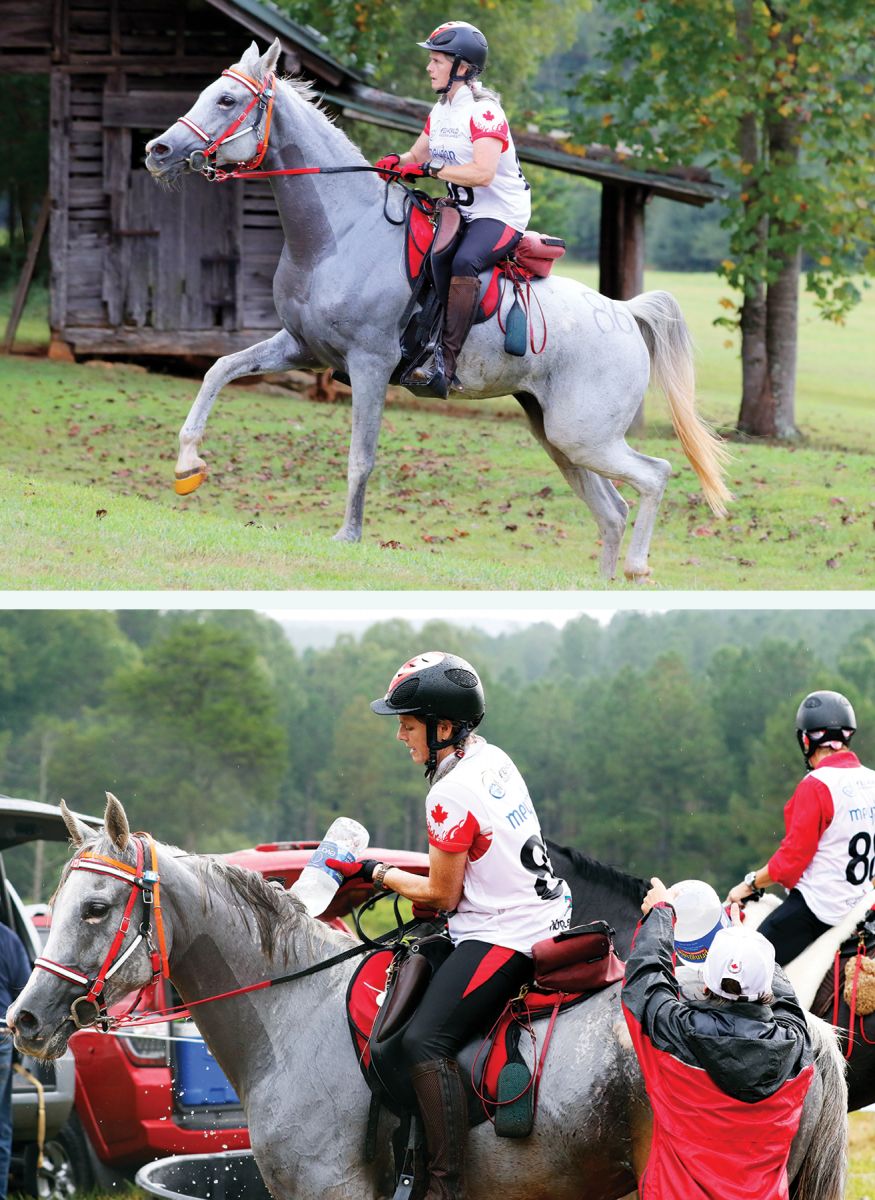
“Fitness is being able to achieve your goals with your horse happy and uninjured,” says Kim Woolley (pictured), who represented Canada in endurance at the 2018 World Equestrian Games on Schakka Kahn. Photos: Becky Pearman Photography
Building Musculoskeletal Strength
Musculoskeletal strength involves the muscles and skeleton. This type of strength training is akin to humans going to the gym and lifting weights. It increases muscle mass, and strengthens muscles, tendons, ligaments, and bones — all of which reduces the potential for injury.
“Greater strength increases oxygen uptake at the cellular level and increases blood flowing to the muscles by 40 times, from rest to maximum exertion,” says Henderson. “It also increases the horse’s ability to use fat as fuel, so it can perform longer before getting tired.”
Bones and ligaments take much longer to develop fitness as horses aren’t designed to travel faster than a walk for miles and miles, or to jump lots of jumps. Hence, it’s imperative when creating a fitness program that activities take into account these slower-developing tissues.
“Bone responds best to short bursts of high-impact loading, three times per week,” says Henderson. “So, if you’re road riding, you should ride mostly at the walk with a maximum of five to ten minutes of trot to achieve the maximum bone response without damaging cartilage and soft tissue.”
Exercises that build musculoskeletal strength include basic dressage and lateral movements (leg yield, shoulder-in), transitions, lengthening and shortening gaits, hills, trotting poles, and grids.
Henderson says dressage and endurance horses should focus on low intensity with a high number of repetitions, while jumping and Western performance horses should focus on a low number of repetitions with high intensity.
Related: Fit for Dressage: The Case for Grace and Lightness
Aerobic Training
“Low intensity long slow distance work is aerobic — which means it uses oxygen — and is powered by fat and sugar stores,” says Henderson.
“Aerobic fitness develops the fastest in horses because they’re prey animals, built to run really quickly for short periods of time,” says Woolley.
Henderson says cardiovascular training improves how fast tissues can use oxygen during exercise (also known as VO2 max) and the amount of air moved in and out of the lungs. Horses typically inhale 50 to 60 litres of air per minute at rest and up to 1,800 litres per minute at a gallop. Cardiovascular fitness increases heart mass, allows the horse to work at a higher level with a lower heart rate, increases plasma/blood volume, increases total red blood cells, and improves the amount of blood vessels in tissues.
“It takes three weeks of low intensity training to establish an aerobic base,” says Henderson. “Then long slow distance and moderate intensity training will start producing cellular changes in the muscles in weeks four through six. In weeks six through twelve, the types of muscle fibres start changing and adapting, to better perform the job required.”
Exercises that increase aerobic capacity include interval training, hill work at walk and trot, and anaerobic bursts of speed (see below). Intervals that incorporate up to two minutes of canter followed by two minutes of walk at 130 to 160 beats per minute (bpm) are a good start. The recovery heart rate should be below 100 bpm. Those intervals can then be increased by one minute to 3:3 and 4:4, depending on fitness requirements.
Anaerobic Fitness
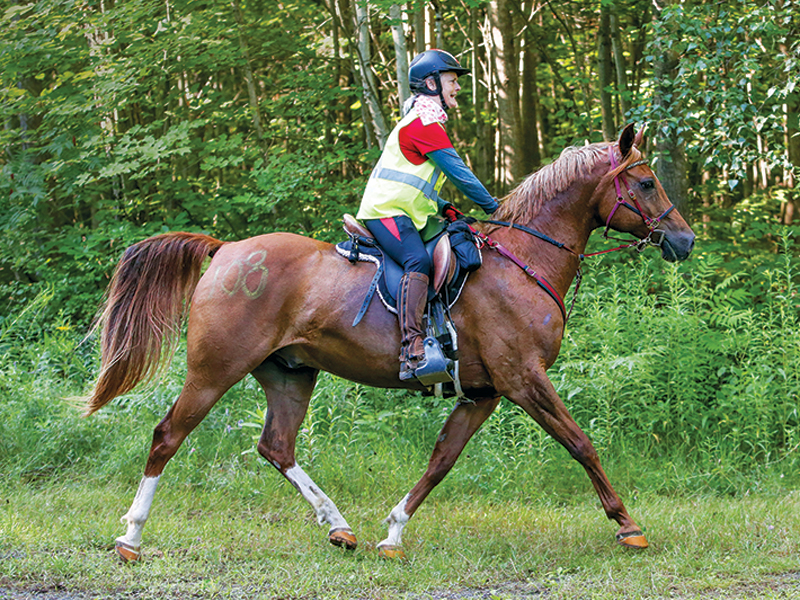
Aerobic fitness develops fastest in horses because they’re prey animals, built to run from danger. Pictured is Kim Woolley on Bee’s Red Gem. Photo: Wendy Webb Photography
Anaerobic exercise is where the horse’s body switches from aerobic work (with oxygen) to using carbohydrates for energy without oxygen. It’s high intensity exercise, which includes fast bursts of speed, recruits all muscle fibres, and produces lactic acid, which induces cramping.
Henderson says the horse’s anaerobic threshold is usually at a heart rate of 160 bpm. By pushing the horse into anaerobic work for brief periods, the horse’s aerobic capacity increases and the body is stimulated to become more aerobically efficient.
Interval training exercises are typically used to conduct anaerobic workouts whereby fast canters of 20 seconds or less with a heart rate of 160 to 180 bpm are followed by about one minute of recovery at a heart rate of 130 bpm. A heart rate monitor is handy for this work.
Bursts of power and speed while maintaining a round shape or outline so that the horse uses itself correctly must be trained, and is imperative work for endurance, jumping, and eventing horses.
Related: Introducing Your Horse to Lateral Work
Example of a Three-Month Fitness Plan
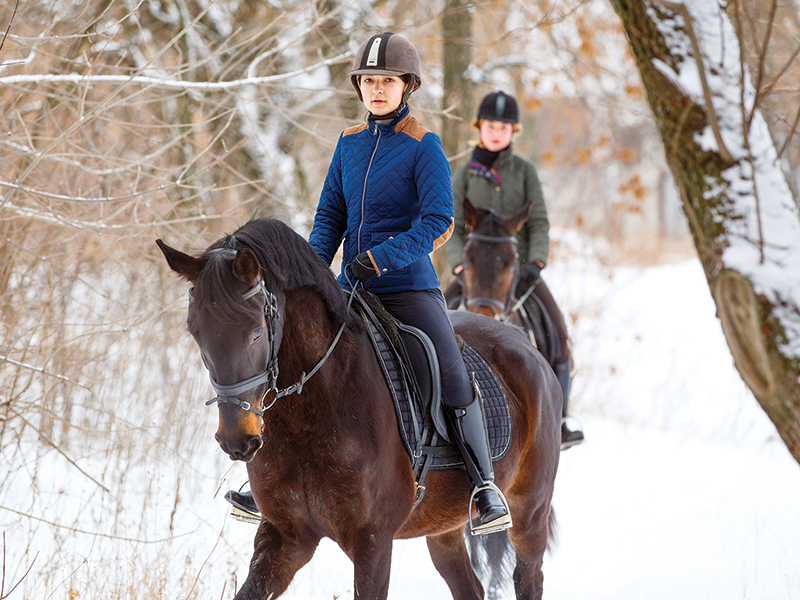
If your horse has time off over winter, there’s no need to wait for the snow to melt. The long slow distance work of winter trail riding can be incorporated into your fitness plan. Photo: iStock/Sergio Kumer
Every fitness program must be tailored to the specific horse, goals, and current fitness level of the horse. However, Ballou says, “If you’re not currently exercising your horse consistently four days per week, then they don’t have a baseline fitness.”
That applies to many Canadian riders in early spring. If your horse has had the winter off, it will take at least 12 weeks to build them back up to fitness.
“The base of any fitness program is long slow distance (LSD),” says Henderson. For horses expected to do regular arena workouts, jump courses, event at low levels, or complete short endurance rides, the goal of a fitness program is to happily walk, trot, and canter for 60 minutes with a heart rate of 120 to 140 beats per minute. That’s equivalent to six to eight kilometres per hour.
Henderson says depending on how long the horse has been on holiday, its age, experience, and injury history, that level of fitness can take from three months to a year. Here’s how to start:
Weeks 1 to 6 — Walking, core exercises, poles, backing up.

Above/below: Jec Ballou working the horse’s core exercises in-hand, and riding sidehills, a good way to build musculoskeletal strength. Photos: Donna Stidolph
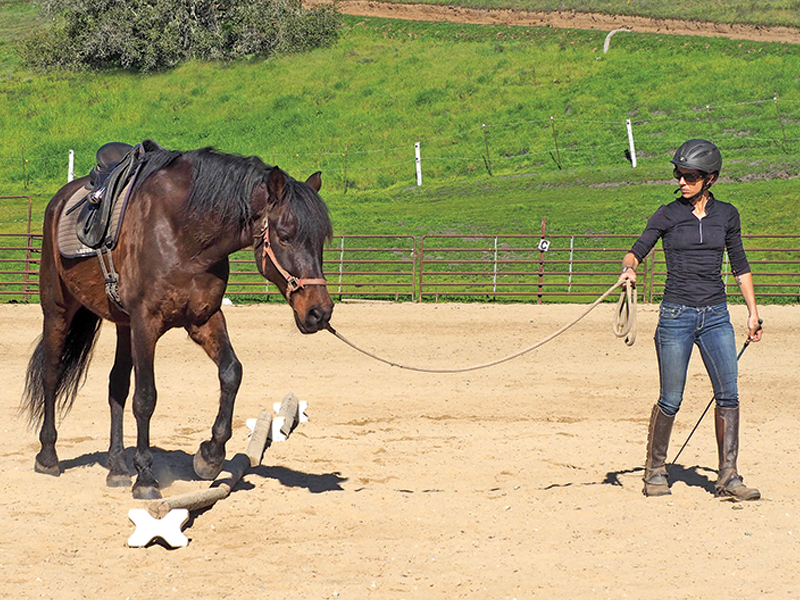
“In the beginning of your fitness program, you’re only going to be exercising your horse for 20 to 30 minutes per day,” says Ballou. “A third of that is going to be callisthenic-type exercises — coordination exercises, walking over poles, backing up.”
The other two-thirds of the time should be more gymnastic movements such as walking down the trail or in the arena, some light jogging, and building progressively from there.
Weeks 7 to 12 – Add gymnastic conditioning with a targeted weekly workout such as hill training, gymnastic jumping (cavalletti), or intervals. Then gradually increase cardiovascular training with more trotting and cantering.
“You need to do an aerobic conditioning workout at least one day per week, even if you’re riding a dressage horse,” says Ballou. “I find that dressage riders are the worst at getting in their conditioning needs. But dressage horses are in the top three for sports-related lower limb injuries. Forget about having perfect form and go over cavalletti or whatever your conditioning workout is.”
Once the horse can walk, trot, and canter happily for an hour, Henderson says higher intensity work can begin. That may include moderate intensity aerobic training for endurance horses (11 to 14 kilometres per hour); power and speed for jumpers and ropers; or high level aerobic and anaerobic conditioning for eventers, polo horses, and reining horses.
Related: Ride with Balance, Flexibility & Strength

Walking over poles is a callisthenic-type exercise that helps build musculoskeletal strength. Photo: Rivendell Equine Veterinary Services.
Example of a One-Week Cycle
Within every fitness plan are one- or two-week cycles. Here’s an example:
Day 1 – Rest
Day 2 – Groundwork, core exercises, arena schooling
Day 3 – Long slow distance (walk roads, trails, fields)
Day 4 – Rest
Day 5 – Conditioning day such as hills, interval training
Day 6 – Rest
Day 7 – Arena schooling, skills training
Creating a Plan
Keeping all that in mind, here’s how to create a fitness program:
- Discuss your plan with your veterinarian and hoof care professional. Ensure teeth, deworming, and vaccinations are up-to-date. Check that your tack fits. Consider nutrition.
- Determine your horse’s baseline: resting temperature, respiration, pulse, and general fitness.
- Decide how to record daily training. Diarize your horse’s workouts, how they went, plus all the horse’s care, so you can go back and figure out why the horse performed above or below expectations during a competition.
- Set a long-term goal and intermediary milestones/short-term goals.
- Assess the strength, endurance (aerobic and anaerobic fitness), and skills needed for those goals.
- Work backwards from the date of each goal to determine what work and rest is needed in each cycle (one week or two weeks) to reach the goals.
- Consider using a heart rate monitor to maximize training.
- Incorporate core exercises, strength, and aerobic training to start.
- Increase one of: time, distance, speed, or difficulty, by a maximum of 10 percent per cycle. Do not increase two components at once.
- Rest one-third of the time.
- Consider creating multi-year goals. Many equine performances require years of fitness.
Creating a fitness program and getting your horse fit has incredible benefits. It makes everyday training fun, keeps horses and riders motivated, helps you work towards long-term goals, encourages rider fitness, and prevents injury. Ultimately, it means more time in the saddle with a happy horse.
Related: Equine Rehabilitation and Conditioning Centres
Related: Lunging Horses - Why Bother?
Resources
1. Equestrian Canada E-campus online courses:
- Conditioning the Sport Horse
- Design an Equestrian Sport Program
2. Hilary Clayton books Conditioning Sport Horses, Activate Your Horse’s Core
3. Jec A. Ballou books Equine Fitness, 10-Week Horse Fitness Schedule
Related: Treats for Horse Training
Main Photo: Shutterstock/Rolf Dannenberg



